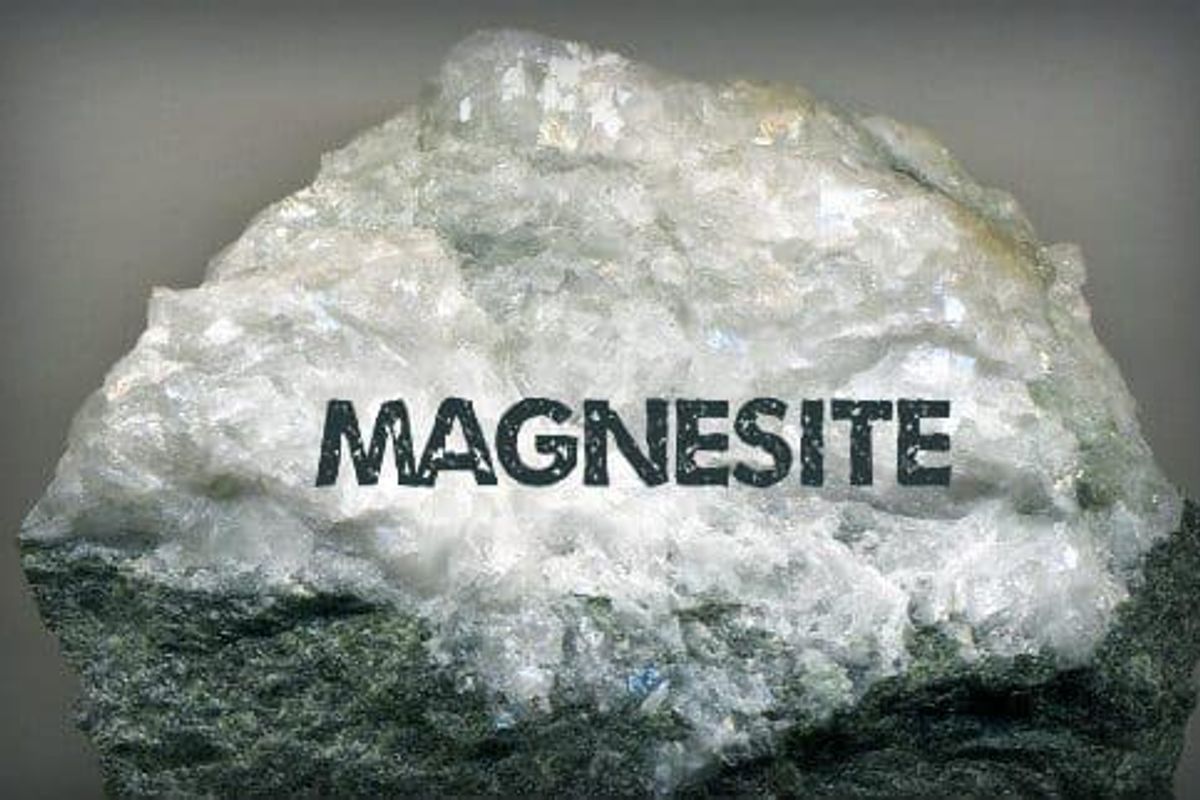10 Top Countries for Magnesite Mining
Here’s a look at the top countries for magnesite mining in 2023, as per the most recent data from the US Geological Survey.

Magnesite plays a key role as a refractory material in steel fabrication, as a catalyst and filler in the production of synthetic rubber and as a material in the production of magnesium chemicals and fertilizers.
The global magnesite market had an estimated value of US$12.37 billion in 2023, and is projected to reach US$14.9 billion in 2028 on rising demand from the construction, chemical, metallurgical and automotive industries.
The US Geological Survey estimates that worldwide magnesite reserves stand at 7.7 billion metric tons (MT). Worldwide, magnesite production reached 22 million metric tons in 2023, mostly on par with the previous year.
While Russia dominates in terms of magnesite reserves, China leads the world in magnesite production. Here the Investing News Network looks at the top countries for magnesite mining.
1. China
Magnesite production: 13 million metric tons
Magnesite reserves: 580 million metric tons
China is the world's top country for magnesite mining by far, accounting for roughly 60 percent of global output. The country's production saw no growth compared to last year's output. The Asian nation is also the principal exporter of the material to the US and many other markets across the world. In 2023, China's magnesite exports to India grew by 9 percent due to increased demand for steel fabrication to supply the latter's infrastructure projects.
China represents a major market for magnesite in its own right, accounting for about 65 percent of total global consumption. However, strict environmental regulations have resulted in the closure of several key magnesite mines.
2. Russia
Magnesite production: 2.5 million metric tons
Magnesite reserves: 2.3 billion metric tons
Russia's magnesite-mining output has dropped significantly in recent years, sinking from 1.5 million MT in 2020 to 950,000 metric tons in 2023. The country hosts the largest reserves of magnesite in the world, coming in at 2.3 billion MT.
One of the key players in the Russian magnesite space is Magnezit Group, which is actively working to expand production capacity at its Kirgiteiskoye and Talskoye deposits by overhauling existing facilities and building new facilities.
2. Turkey
Magnesite production: 13 million metric tons
Magnesite reserves: million metric tons
Next is Turkey, whose magnesite output came to 1.8 million metric tons in 2023, just 20,000 MT fewer than it produced in 2022. Magnesite production in the country has significantly decreased in recent years, falling from 2.7 million MT in 2017.
Turkey has a long history of magnesite mining, both for export and for use at domestic refractories. Akdeniz Mineral Resources, a joint venture with private company Grecian Magnesite, is a large producer and exporter of caustic calcined magnesite products.
3. Brazil
Magnesite production: 13 million metric tons
Magnesite reserves: million metric tons
Brazil's magnesite production has remained relatively flat in recent years.
A critical point in Brazil's magnesite industry came in 2017 with the merger of RHI of Austria and Magnesita Refratários of Brazil to form RHI Magnesita, which then became the world's largest refractory materials producer. RHI Magnesita is reported to own the largest magnesite reserves outside of China.
5. Australia
Magnesite production: 13 million metric tons
Magnesite reserves: million metric tons
Australia's magnesite production has risen steadily in the past few years, moving it up from near the bottom of the list of top magnesite-mining countries to the second spot in 2021 with 2.7 million MT. However, the nation recorded a dramatically reduced magnesite-mining output of 860,000 MT in both 2022 and 2023.
Private company Queensland Magnesia (QMAG) is responsible for the bulk of Australia's magnesite production. QMAG, part of the Refratechnik Group, is mining one of the world's largest magnesite mines, the Kunwarara deposit in Central Queensland. An example of a magnesite-focused junior mining company operating in Australia is Lachlan Star (ASX:LSA) with its Princhester magnesite project, also situated in Queensland.
6. Austria
Magnesite production: 13 million metric tons
Magnesite reserves: million metric tons
Austria's magnesite output has remained relatively flat in recent years, ranging from 760,000 MT to 810,000 MT. Austrian magnesite producer Styromag operates five mines in the country; it produces roughly 120,000 MT of material per year.
"In January 2023, an Austria-based magnesia and refractories company acquired a leading refractory producer in China, allowing it to expand production in China and the east Asia region," reported the US Geological Survey.
7. Spain
Magnesite production: 13 million metric tons
Magnesite reserves: million metric tons
Spain's magnesite output has more than doubled since 2016, coming in at 670,000 MT in 2022.
Spain's Magnesitas Navarras is a leading European magnesia producer. In early 2024, the company received government approval for a project that will allow it to operate a new mine in the Erdiz region for 25 years.
8. Slovakia
Magnesite production: 13 million metric tons
Magnesite reserves: million metric tons
Slovakia produced 510,000 MT of magnesite in 2023, a slight decrease of 2,000 MT versus what it produced a year earlier. Slovakian producer SLOVMAG is majority owned by Russia's Magnezit Group. It specializes in mining magnesite ore and producing refractory products from sintered magnesia.
9. Greece
Magnesite production: 13 million metric tons
Magnesite reserves: million metric tons
Greece produced 380,000 MT of magnesite in 2023, on par with the year before. The nation's magnesite mines and production facilities are located on the Chalkidiki peninsula in Northern Greece.
The country is home to one of the top magnesia producers in the world, Grecian Magnesite, which has facilities in Spain, Turkey and the Netherlands. The Turkish subsidiary of the Greece-based magnesia producer is slated to construct a new rotary kiln in 2024, which the US Geological Survey says is expected to double "its current production capacity of caustic-calcined magnesia to around 50,000 tons per year."
10. Saudi Arabia
Magnesite production: 13 million metric tons
Magnesite reserves: million metric tons
Rounding out the list, Saudi Arabia put out 340,000 MT of magnesite in 2023, displacing Iran for the 10th spot on this list. The country's major producer is Ma’aden Industrial Minerals Company, which produces caustic calcined magnesite from its a high-grade magnesite mine at Al Ghazalah.
Don't forget to follow us @INN_Resource for real-time news updates!
Securities Disclosure: I, Melissa Pistilli, hold no direct investment interest in any company mentioned in this article.

